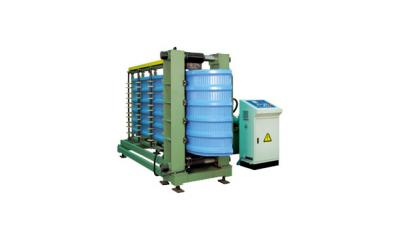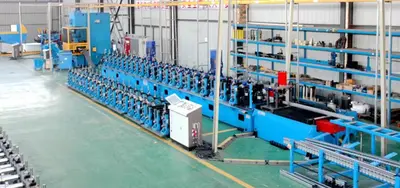Exploring the Foundations of Rock Wool Production Lines
Rock wool has become a widely used material in various industries due to its excellent insulation properties and fire resistance. The manufacturing process of rock wool involves intricate steps and specialized equipment. In this blog, we will delve into the foundations of rock wool production lines, explaining the key components and processes involved.
Understanding Rock Wool Production Lines
Rock wool production lines are designed to transform raw materials, such as basalt or diabase, into insulation materials with superior performance. These production lines involve sophisticated machinery and adhere to strict quality control standards to produce high-quality rock wool products.
Key Components of Rock Wool Production Lines
Melting Furnace: The first step of the production line involves melting the raw materials at extremely high temperatures (above 1500°C) in a melting furnace. This process melts the minerals and transforms them into molten rock mass.
Spinning Machine: The molten rock mass is then transferred to a spinning machine. This machine typically consists of a high-speed centrifuge, which spins the molten rock to create fine fibers. In addition, a binder may be added to the fibers to enhance their cohesion.
Collection Chamber: The fibers produced by the spinning machine enter a collection chamber, where they form a continuous mat. This mat is further compressed to consolidate the fibers and enhance the insulation properties of the final rock wool product.
Curing Oven: The compressed mat is then transferred to a curing oven, where it is heated to polymerize the binder and strengthen the fibers. This process ensures that the rock wool product remains structurally stable and durable.
Cutting and Packaging: After the curing process, the rock wool mat is cut into desired dimensions and packaged for distribution. The final product is then ready to be used as insulation in buildings, industrial equipment, and more.
Quality Control and Environmental Considerations
Rock wool production line is subject to stringent quality control measures to ensure the final product meets the required standards. This includes monitoring the chemical composition, fiber diameter, density, thermal conductivity, and other relevant parameters. Additionally, environmentally friendly production practices, such as efficient energy utilization and waste management, are crucial to minimize the impact on the environment.
Advancements in Rock Wool Production Lines
With technological advancements, rock wool production lines have evolved to improve efficiency and product quality. Automation and computer control systems have reduced human involvement and increased production speed. Additionally, research and development efforts have focused on optimizing the raw material composition and enhancing the overall performance of rock wool insulation.
In conclusion, rock wool production lines play a crucial role in the manufacturing of this highly useful insulation material. These production lines consist of several key components, including melting furnaces, spinning machines, collection chambers, curing ovens, and cutting and packaging facilities. Quality control and environmental considerations are integral aspects of rock wool production, ensuring the final product meets industry standards while minimizing environmental impact. With ongoing advancements, rock wool production lines are continually improving, further enhancing the efficiency and performance of rock wool insulation.


 CN
CN
 EN
EN
 fr
fr  de
de  es
es  it
it  ru
ru  pt
pt  ar
ar  th
th  pl
pl  ro
ro 







 Call us on:
Call us on:  Email Us:
Email Us:  #1809, Jianhu Rd, Keqiao, Shaoxing, Zhejiang, China
#1809, Jianhu Rd, Keqiao, Shaoxing, Zhejiang, China 